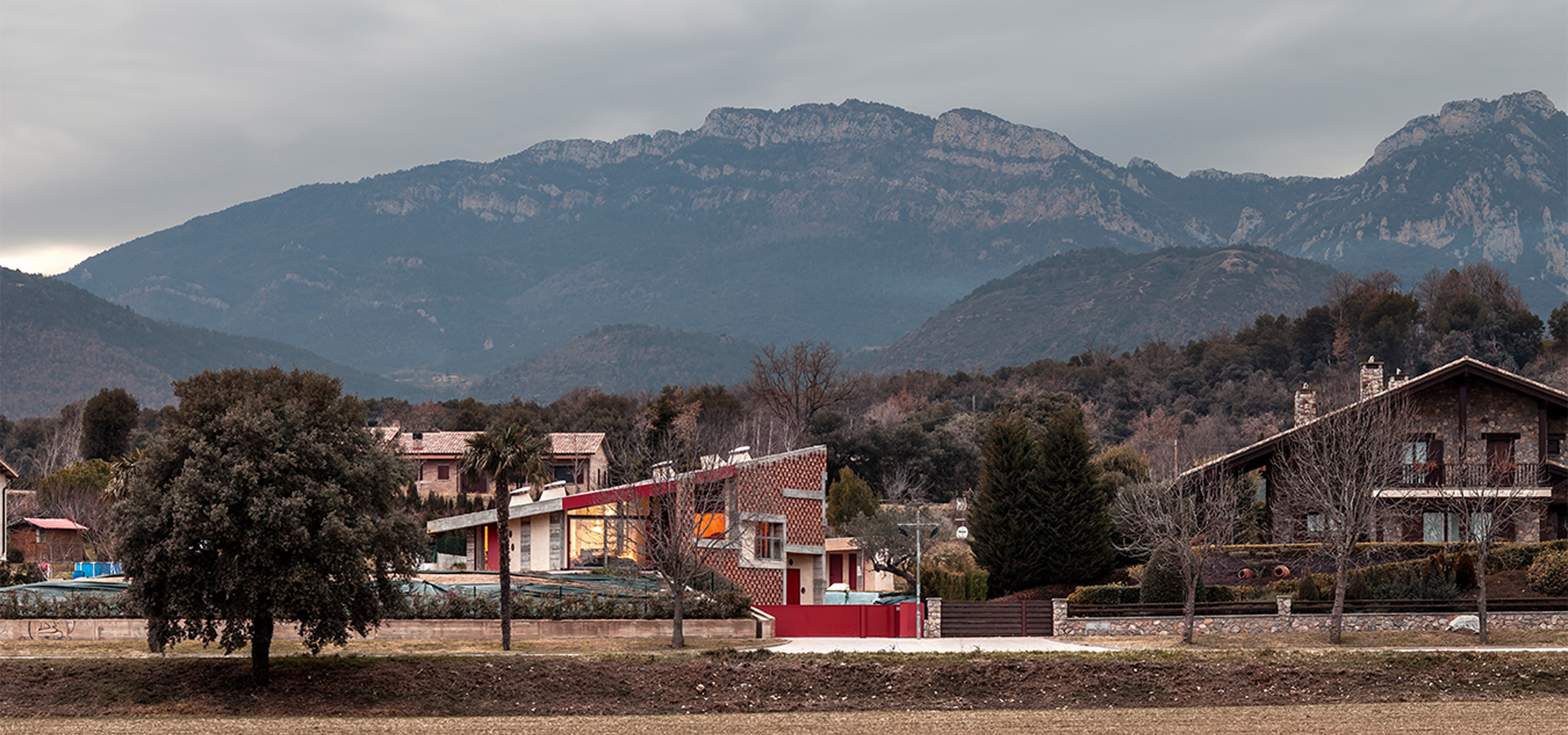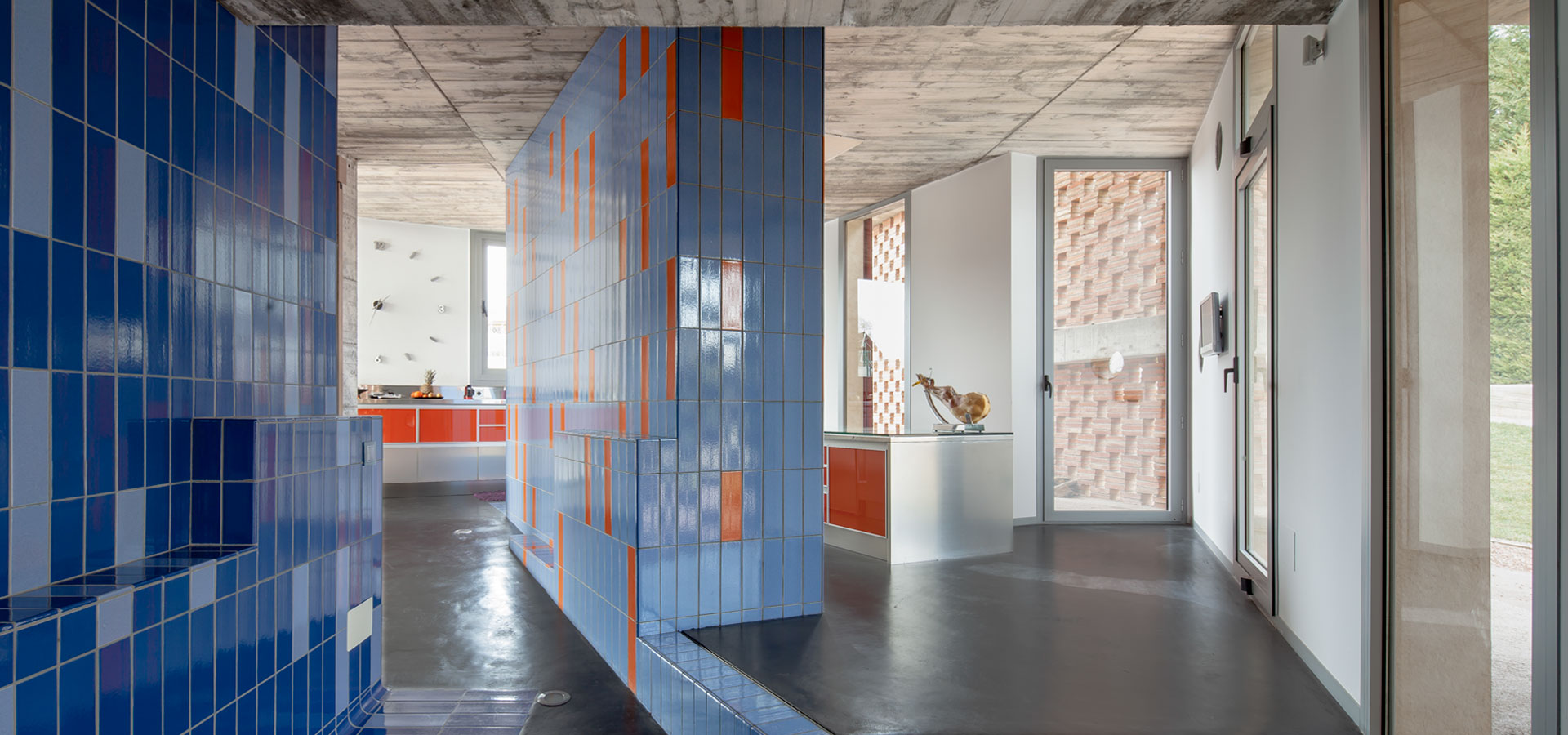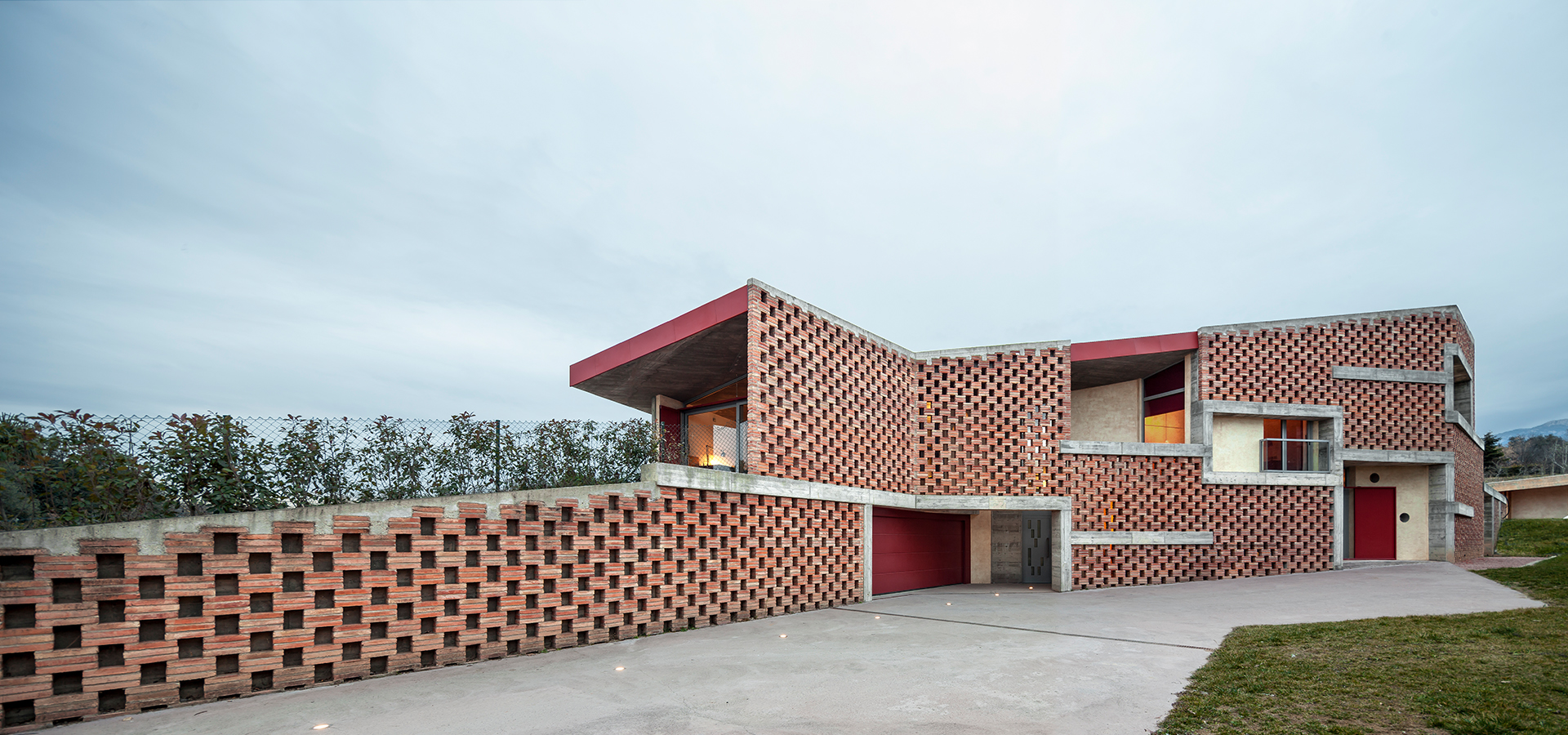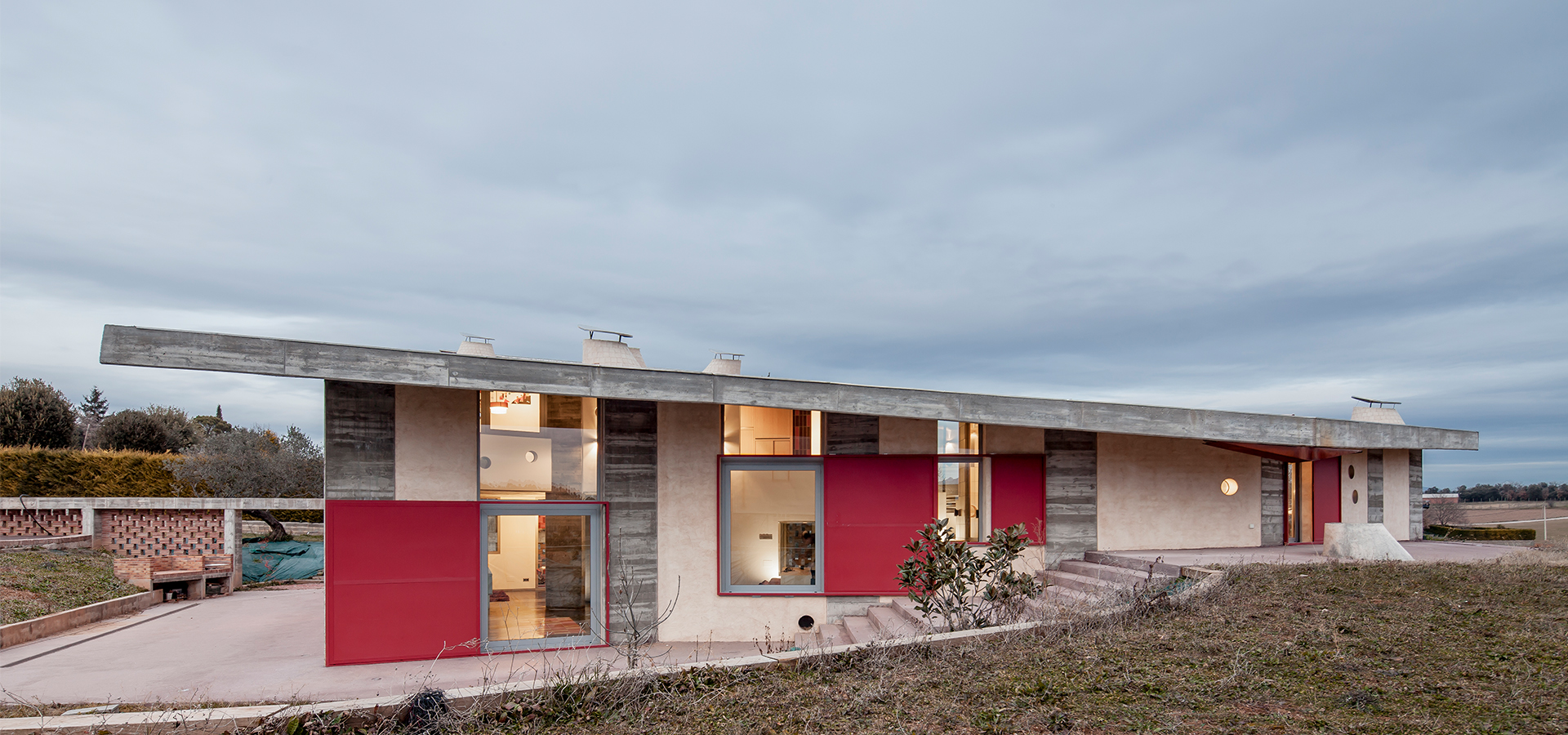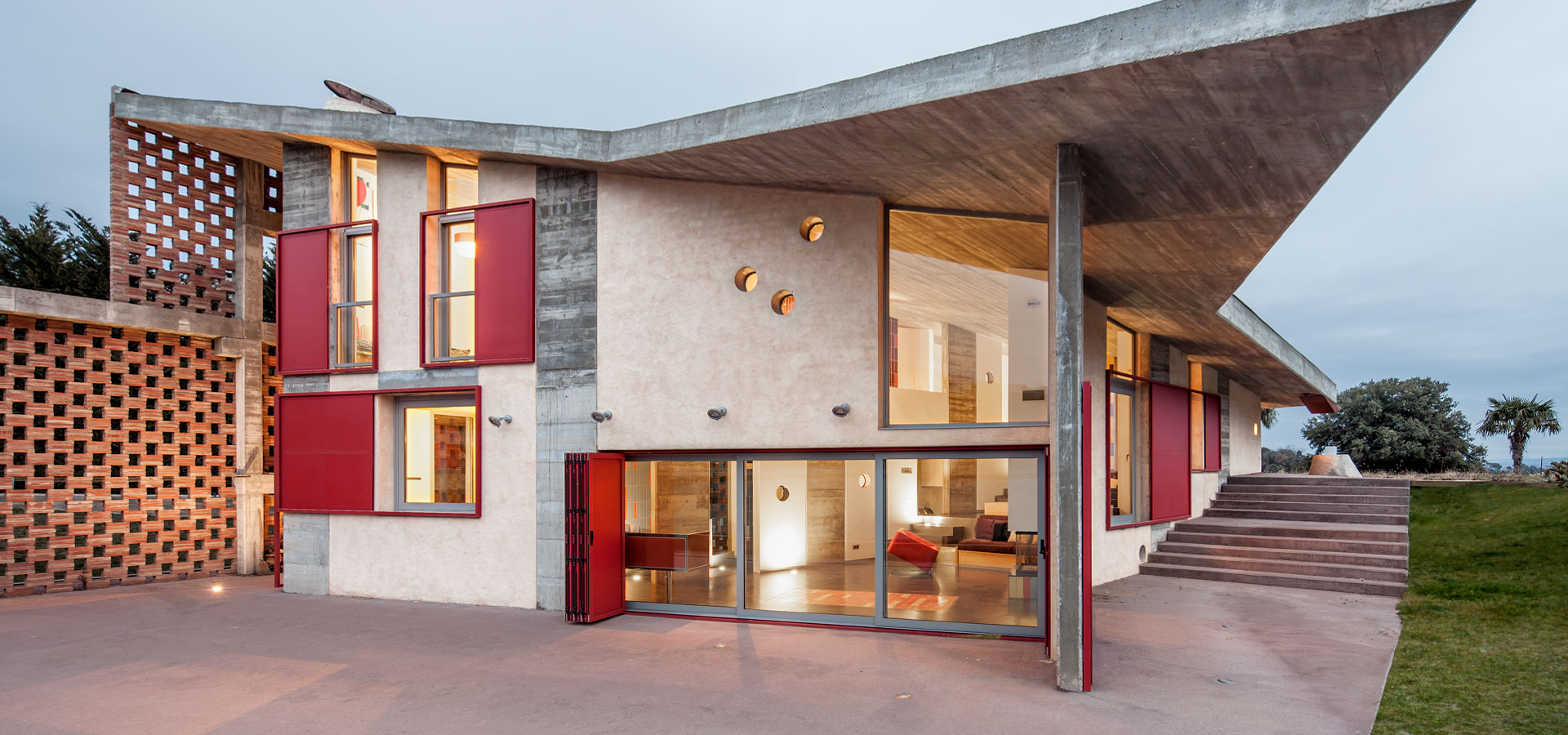02.04>BTX
Casa Bitxo
Bitxo House stands on the gentle hills of the Pre-Pyrenean landscape of Graugés, a hundred kilometres far in the north of Barcelona, in Catalonia. It is located in a suburban area among “mountain style” houses, with the Queralt mountain range at the background.
The owners, Xavier and Queralt, both of them musicians, acquired a plot to fill their life stave with their music twenty years ago. Over time, without rush. The design and construction of the house lasted over ten years.
Due to the contact with the ground, the lines of the stave broke, absorbed the trace of an old path and set a diagonal on the site, which then served to structure a hierarchical process, adding elements and processes. Such traces were actually used to plan the house, afterwards built using an expressive concrete structure that organises the brick lattice of the façade. A single slope roof covers all spaces, which are defined by free-standing bodies lined with colourful glazed ceramic.
Despite its unconventional geometry, the house is linked to the local tradition and to the ground itself through the use of massive materials such as expressive concrete structure and the emerging wall of brick.
Starting at the entrance, below the lattice, the spaces and rooms are arranged and structured along the trace in a spiral movement that initially follows the natural slope, with a ramp leading to the kitchen and a double-height dining and living rooms. The ascent continues, with intermediate levels that tight the spaces against the roof slab, offering different room heights, depending of the room function and intimacy, being the living room a double height while bedrooms the lower spaces. The end of the walk, completed with a fireman’s pole just in the project, leads to the playing room for children. The playground is in fact the redundant element for the whole house.
The different corners of the building respond to the diversity of sensations of its occupants, looking for moments of more or less privacy, of relationship with the outside and distant views or of privacy, shelter and personal connection with nature. Two concatenated spaces link the private areas with the total personalization of the treatments and personal healing processes. The moment of transit to the water area is done through a small garden protected by a wall, like a private Eden, in the process of accommodating the senses. As the pavilions in Japanese gardens, just a pergola and a minimal enclosure return the feeling of being immersed in nature.
SITE
Graugés Avià, Barcelona
DESCRIPTION
DEVELOPER
ARCHITECTS
MAIN CONTRACTOR
AWARDS
YEAR
MAIN COLLABORATORS
Jordi Culell (Construction Supervision)
Adrià Goula (Photography)
PUBLICATIONS
Architektur, July 5, 2013
Arquitectura Viva, July / August 2013

